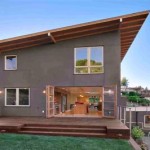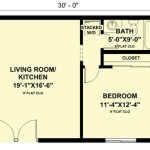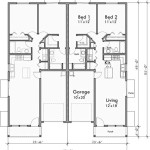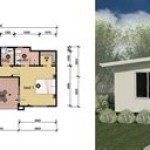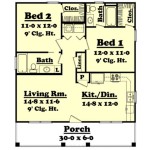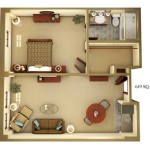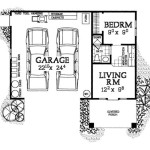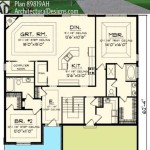One Story House Plans With Game Room: Maximizing Space and Entertainment
The appeal of one-story house plans continues to grow, especially for those seeking accessibility, ease of maintenance, and a streamlined aesthetic. As lifestyles evolve, homeowners are increasingly prioritizing entertainment spaces within their residences. Incorporating a game room into a single-level home requires careful planning to maximize space and ensure functionality. This article explores key considerations for designing one-story house plans that seamlessly integrate a dedicated game room.
Single-story living offers numerous advantages, including enhanced mobility for individuals with limited movement and simplified cleaning routines. Ranch-style homes, a classic example of one-story designs, have seen a resurgence in popularity due to their open layouts and adaptability. When planning a home that includes a game room, it is essential to consider the overall flow of the house, the intended use of the space, and acoustic properties to minimize noise disruption to other areas.
Optimizing Space Allocation for a Game Room
One of the primary challenges in designing single-story house plans with a game room is efficient space allocation. Unlike multi-story homes where the game room might be located on a separate floor, single-story designs require careful consideration of the floor plan to accommodate the entertainment area without compromising other essential spaces such as bedrooms, living areas, and kitchen.
Several strategies can be employed to optimize space utilization. Open-concept layouts, which combine the living room, dining area, and kitchen, can free up square footage that can then be allocated to the game room. Strategically positioning the game room adjacent to the main living area allows for overflow during gatherings and provides a cohesive entertainment zone. Furthermore, built-in storage solutions, such as shelving units and cabinets, can help maximize vertical space within the game room, reducing clutter and providing organized storage for games, equipment, and accessories.
The size of the game room will largely depend on the intended activities and the number of users. A smaller game room might be suitable for a single pool table or a dedicated board game area, while a larger space could accommodate multiple gaming stations, a home theater setup, and a wet bar. It is also essential to consider the dimensions of furniture and equipment when planning the layout to ensure comfortable movement and adequate playing space.
Consider the natural light available. While dim lighting is often preferred for video games and movies, ample natural light is ideal for board games and other activities. Incorporating large windows or skylights can brighten the space and create a more inviting atmosphere. However, it's also crucial to install blackout curtains or blinds to control the amount of light during movie nights or intense gaming sessions.
Acoustic Considerations and Soundproofing Techniques
Game rooms are often associated with high levels of noise, which can be disruptive to other areas of the home. Soundproofing is therefore a crucial aspect of designing a single-story house plan with a dedicated entertainment space. Effective soundproofing not only enhances the enjoyment of the game room but also ensures a peaceful environment for other occupants of the house.
Several soundproofing techniques can be employed during the construction or renovation process. One of the most effective methods is to use sound-dampening materials in the walls, floors, and ceilings. Rockwool insulation, for example, is known for its excellent sound absorption properties and can significantly reduce the transmission of noise. Double-pane windows and solid-core doors can also help minimize sound leakage.
In addition to structural soundproofing, acoustic treatments can be implemented within the game room to further reduce noise levels. Acoustic panels, which are designed to absorb sound waves, can be strategically placed on walls and ceilings to minimize echoes and reverberations. Bass traps, which are typically placed in corners, can help control low-frequency sounds, such as those produced by subwoofers or musical instruments. Rugs, carpets, and upholstered furniture can also contribute to sound absorption, creating a quieter and more comfortable environment.
Consider the placement of electronic equipment, such as speakers and subwoofers. Positioning these devices away from walls and corners can help prevent sound vibrations from being transmitted to other parts of the house. Additionally, using vibration-dampening pads beneath equipment can further reduce noise transmission. Proper planning and the implementation of effective soundproofing techniques are crucial for creating a game room that is both enjoyable and considerate of other occupants of the home.
Integrating Functionality and Style in Game Room Design
A well-designed game room should not only be functional but also aesthetically pleasing and integrated with the overall style of the house. The design should reflect the homeowner's personal preferences and the intended use of the space. Whether the game room is intended for casual entertainment, competitive gaming, or a combination of activities, the design should be tailored to meet those specific needs.
Consider the overall theme and color palette of the game room. A cohesive design can create a more inviting and enjoyable atmosphere. For example, a retro-themed game room might feature vintage arcade games, neon signs, and bold color combinations, while a modern game room might incorporate sleek furniture, minimalist décor, and neutral tones. The choice of flooring is also important. Durable and easy-to-clean materials, such as vinyl or tile, are often preferred in game rooms, as they can withstand heavy use and spills.
Lighting plays a crucial role in creating the right ambiance. Adjustable lighting fixtures, such as dimmer switches and adjustable spotlights, allow for customization based on the activity. Task lighting, such as desk lamps or reading lights, is essential for board games and other activities that require focused attention. Ambient lighting, such as recessed lighting or wall sconces, can provide a soft and inviting glow. Accent lighting, such as LED strip lights or spotlights, can be used to highlight specific features or decorations.
Storage solutions are essential for keeping the game room organized and clutter-free. Built-in shelving units, cabinets, and closets can provide ample storage for games, equipment, and accessories. Consider incorporating customized storage solutions, such as game racks, media consoles, and bar cabinets, to meet specific needs. Seating is another important consideration. Comfortable and supportive seating options, such as gaming chairs, sofas, and bean bags, can enhance the gaming experience. It is also essential to consider the ergonomics of the seating to prevent discomfort or strain during long gaming sessions. Integrating functionality and style into the game room design can create a space that is both enjoyable and visually appealing, enhancing the overall living experience within the single-story home.
The placement of the game room within the overall house plan also impacts functionality. If the space is intended for entertaining guests, locating it near the entrance or main living area can be beneficial. However, if the primary users are family members, a location closer to bedrooms or recreational areas might be more appropriate. Access to outdoor spaces, such as a patio or deck, can also enhance the versatility of the game room, allowing for seamless indoor-outdoor entertainment.
Ultimately, designing one-story house plans with a game room requires a holistic approach that considers space allocation, acoustic properties, functionality, and style. By carefully planning and implementing effective strategies, homeowners can create a dedicated entertainment space that enhances their living experience and adds value to their home. The key is to balance the desire for entertainment with the need for comfort, functionality, and aesthetic appeal, resulting in a game room that is both enjoyable and seamlessly integrated into the overall design of the single-story home.

Image Result For Single Story 4 Bedroom Floor Plan With Game Room And Media House Plans One Country Style

Stunning 5 Bed New American House Plan With Game Room 130035lls Architectural Designs Plans

One Level Hill Country House Plan With Game Media Room 36644tx Architectural Designs Plans

Traditional Style House Plan 4 Beds 5 Baths 5028 Sq Ft 84 498 Bedroom Floor Plans How To

One Story European House Plan With Game Room 430026ly Architectural Designs Plans

Image Result For One Story House With Game Room Level Plans Floor

One Story House Design With Game Room Plan 4861

Plan 66341we Florida House With Fabulous Game Room Plans One Story Blueprints

House Plan 88630 One Story Style With 3191 Sq Ft 4 Bed 3 Bath

One Story Home Plans With Game Room Bar Country House Style New

